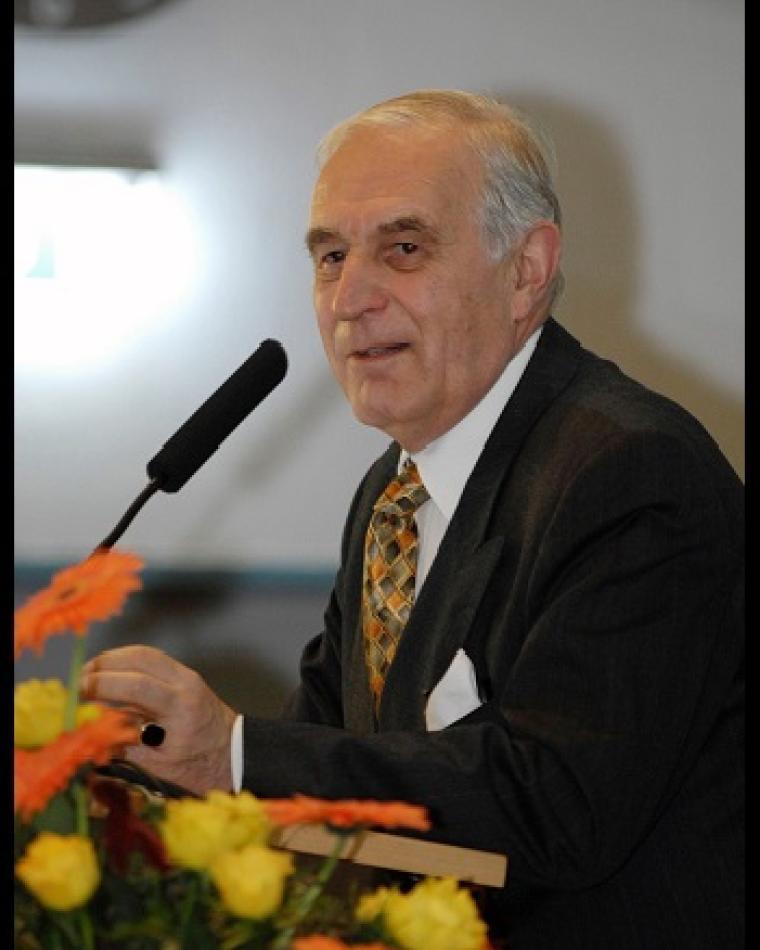
Peter Komarek
Peter Komarek
Contact Menu
Peter Komarek Passed Away
December 16, 2016 (PO49). Peter Komarek, a very well-‐known European leader in the field of applied superconductivity, was born in Vienna, Austria, on November 1st, 1941 and passed away on November 23rd, 2016 at the age of 75.
In 1965 he received engineering diploma from the Technical University of Vienna and one year later he earned a PhD in Technical Physics at the same university. From 1967 until 1973 Peter worked at the Institute for Technical Physics at the Nuclear Research Centre (KFA) in Jülich, Germany and was soon promoted to a division head. In 1973, he joined the Nuclear Research Centre in Karlsruhe (FZK), Germany, as Head of the Division of Cryo-‐energy Technology. His main research topic at the time was the magnetic energy storage.
In 1974, Peter earned his Habilitation (venia legendi, the equivalent of D.Sc.) at the University of Graz, Austria, and in the same year he started his first course on superconducting magnets in energy technology. In 1979, the Austrian Ministry of Science and Research appointed Peter as an honorary professor and in the same year he was promoted to Deputy Director of the FZK Institute of Technical Physics (ITEP), heading the superconductivity division.
Peter’s extraordinary management skills were soon recognized and in 1981 he was appointed to the FZK Scientific and Technical Board. In 1986, Peter Komarek was officially appointed as the Director of the FZK ITEP and he earned another honorary professorship at the Faculty of Electrical Engineering and Information Science at the University Karlsruhe, Germany.
During his work at ITEP, Peter initiated and supported many groundbreaking activities in the field of applied superconductivity for high current applications. Among them were the successful tests in the TOSKA facility of the EURATOM LCT coil, the POLO coil, the ITER and the W7X prototype coils, the development of HTS high current leads for Fusion, the development of high field NMR coils and first SMES (Superconducting Magnetic Energy Storage) demonstrators. Immediately after the discovery of high-temperature superconductivity (HTS), he supported applied materials research in his institute and HTS energy applications such as fault current limiters.
Peter devoted substantial time to serve the research community in fusion and cryogenics. He was also active in IEEE, serving for many years as Head of the Europe Technical Committee, IEEE Council on Superconductivity (IEEE CSC). Furthermore, he served many years as Editor of the journals “Cryogenics” and “Fusion Engineering and Design” and was president of the IEA (International Energy Agency) Agreement on the Assessment of High-‐ temperature Superconductivity. As director of ITEP, he became member of the Board of the European Society of Applied Superconductivity (ESAS), for which he served as President from 2002 – 2006.
For his outstanding achievements in applied superconductivity, Peter received many awards, among them the Heinrich Hertz Prize of the Baden-‐Württemberg Energy Foundation, the Mendelssohn Award of the International Cryogenic Engineering Committee and the Austrian Wilhelm Exner Medal. In 2001, he also became the third awardee worldwide of the IEEE Award for Continuing and Significant Contributions in the Field of Applied Superconductivity, Large Scale Applications
In his private life, Peter devoted time to his loving family, played soccer and tennis in summer, and enjoyed winter skiing in the Austrian Alps. Very sadly, his two children passed away before him. Although gravely ill for several years, Peter never lost his positive attitude and was attempting to follow the progress in his institute and research field. He is survived by his wife Gertrud.
Karlsruhe, Germany, November 2016

Prof. Mathias Noe, Director, Institute of Technical Physics, KIT, Germany
Prof. Bernhard Holzhapfel, Co-Director, Institute of Technical Physics, KIT, Germany, and President of ESAS
Antonio della Corte, President, IEEE Council on Superconductivity